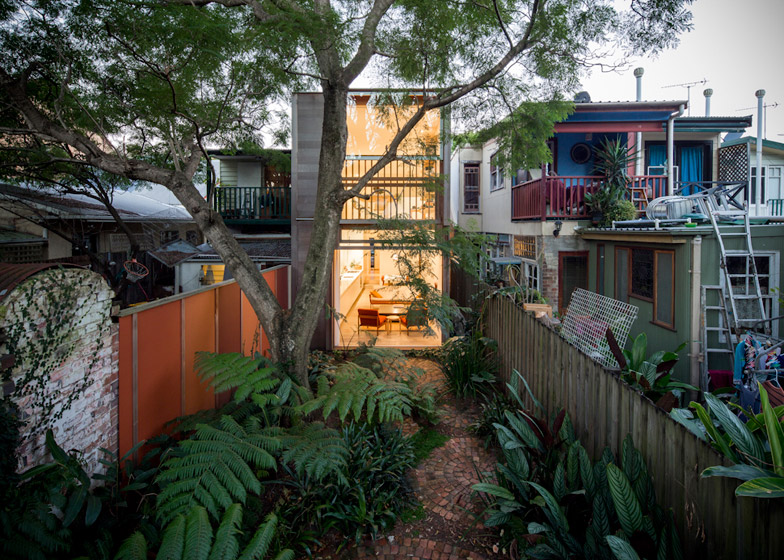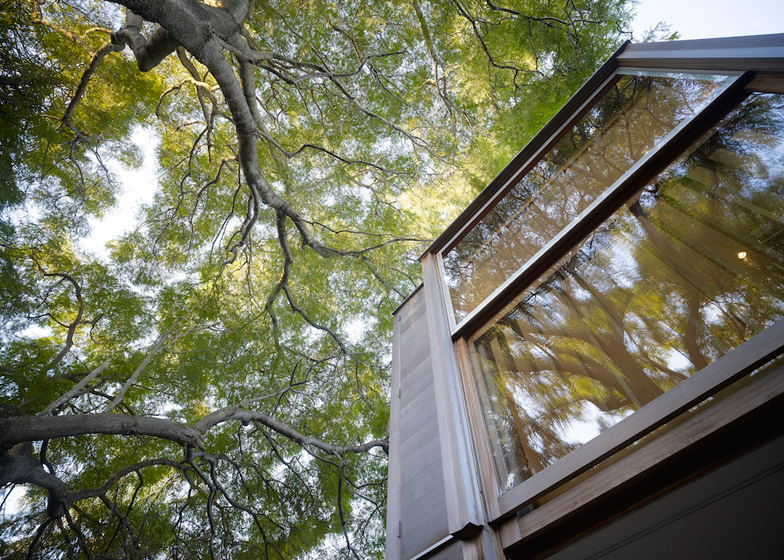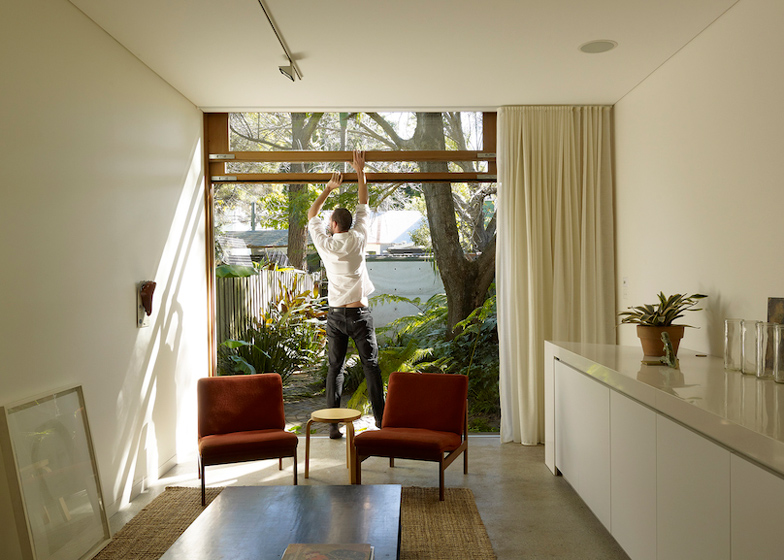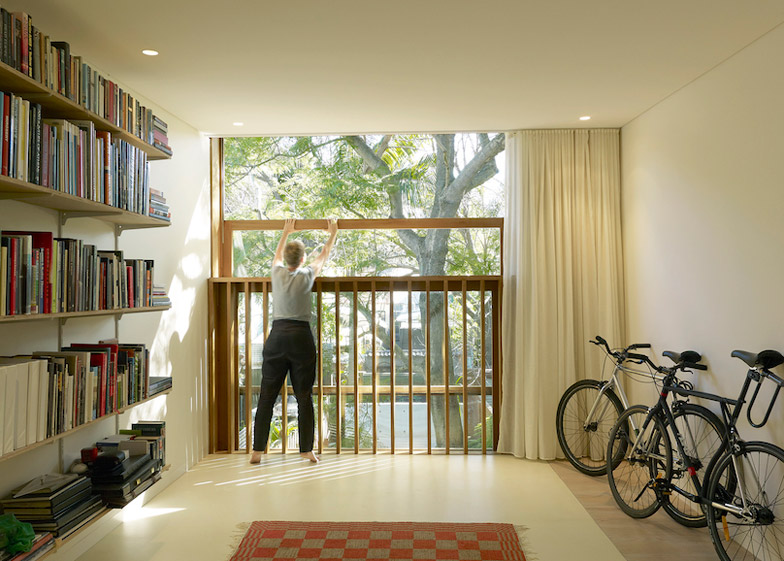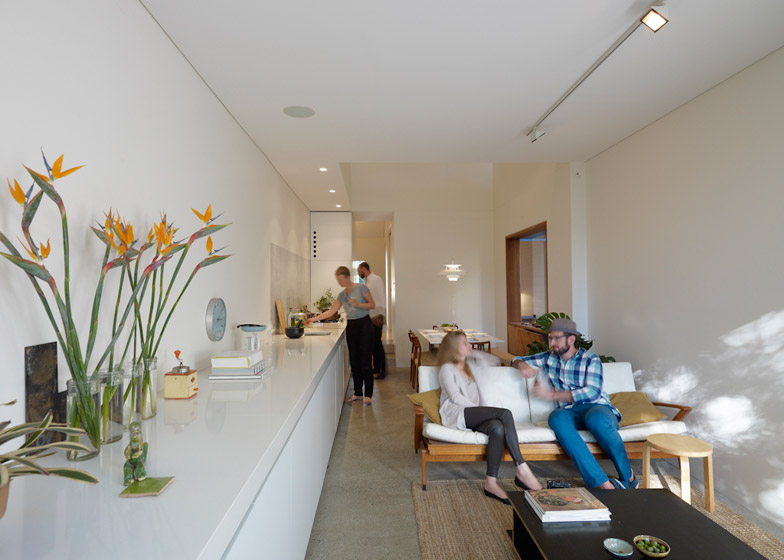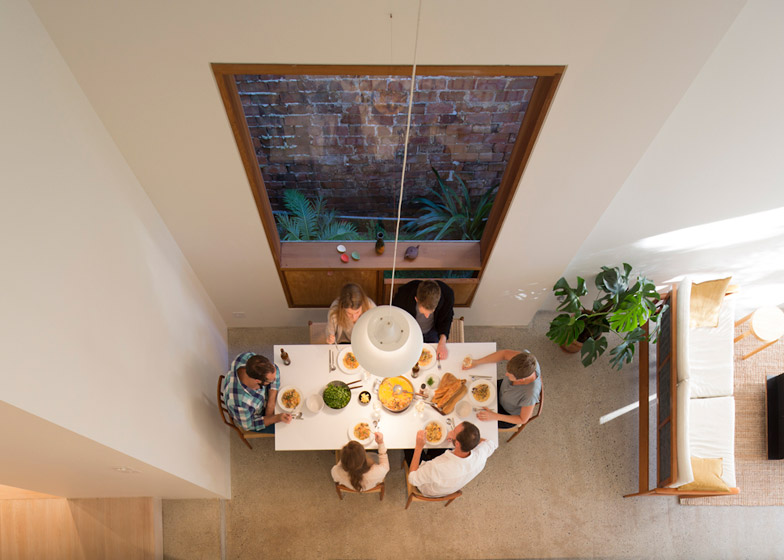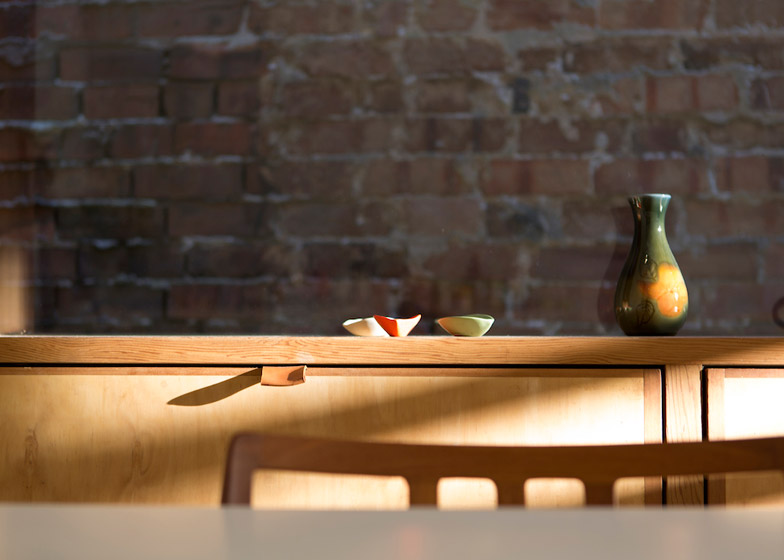Two oversized sash-style windows have been added to the back of this two-storey extension by Sydney architects Panovscott, allowing both levels to open up completely to the garden (+ slideshow).
Architects Anita Panov and Andrew Scott of Panovscott added the oversized windows to bring more light and air into their semi-detached Sydney home, which they extended and named Armature for a Window.
"In the front room of our semi is a small counter-weighted sash window, and for a while it was the only source of natural light in our living space," said the architects, whose other projects include a Sydney extension with an alternating timber and glass facade.
"By this window, we sat for many months talking, sketching and planning, and as we did this our small window took on mythical proportions," they added. "These familiar features were manipulated and became the window to our garden, the house itself little more than an armature."
The project involved a complete renovation and opening up of the existing single-storey house, and the addition of a two-storey extension at the back, which has created 67 square metres of additional space.
Rooms are arranged in a linear sequence to fit with the narrow proportions of the house, which is 15.5 metres long and varies between 3.5 and 4.5 metres wide. The ground floor has a bedroom and bathroom near the entrance, and an open-plan kitchen, dining and living space at the back. The upper floor has a guest bedroom built into the roof space of the existing house and an office in the extension at the back.
Divisions between these rooms have been minimised to encourage more flexible use. The bedroom features a wall of sliding doors so it can be opened up to the hallway, and the office overlooks a void in the centre of the house to connect it with the living space below.
"Today we hear much debate about finding the right life/work balance, but this careful demarcation makes less and less sense to us," Anita Panov told Dezeen. "In this house, we consciously wove the strands of work and life together. The upstairs space is largely given to a studio that enabled us to work together and with colleagues and clients, but work and conversations spilled into the living and dining areas, and in turn our studio became a place of solitude and reflection when not in use for practice."
Work on the extension was completed bit by bit over a seven-year period, with the main construction work done in the first two years and smaller jobs completed over the next five years.
"We undertook much of the building ourselves, so the schedule reflects our ability to commit time to the project to some extent, but then we considered elements in detail – the front door alcove, the garden wall, screens – as we continued to live in and embellish the spaces," said Panov.
In addition to the sash-style openings at the back, a large window has been added to the side of the house, and two timber hatches have been built into the wall beneath it to provide additional ventilation.
Polished concrete flooring has been laid in the extended section of the house and limed satin ash timber has been used for the flooring in the original house.
In the bathroom a limestone floor with a variegated pattern has been added and standard bathroom tiles have been laid on the walls, helping to exaggerate the height of the room along with the large pivot door and raked ceiling.
The back of the extension is clad in western red cedar, which will fade to a lighter grey over time. Bricks from an old fireplace and toilet have been salvaged to create a circular section of paving in the garden.
"We like to think of the words of the Roman philosopher Marcus Tullius Cicero: 'If you have a garden and a library, you have everything you need,'" said Panov. "Next to this, our greatest aspirations were for light and air, and a generosity of space within the house."
"We also love Mexican architect Luis Barragán's sentiment that 'serenity is the great and true antidote against anguish and fear, and today, more than ever, it is the architect's duty to make of it a permanent guest in the home,'" added Panov. "This house responded to this, enabling an outlook to the contained garden, while borrowing the long veiled view to the treetops in the distance, which also provide a green cloak of privacy."
Photographs are by Brett Boardman and Panovscott.

